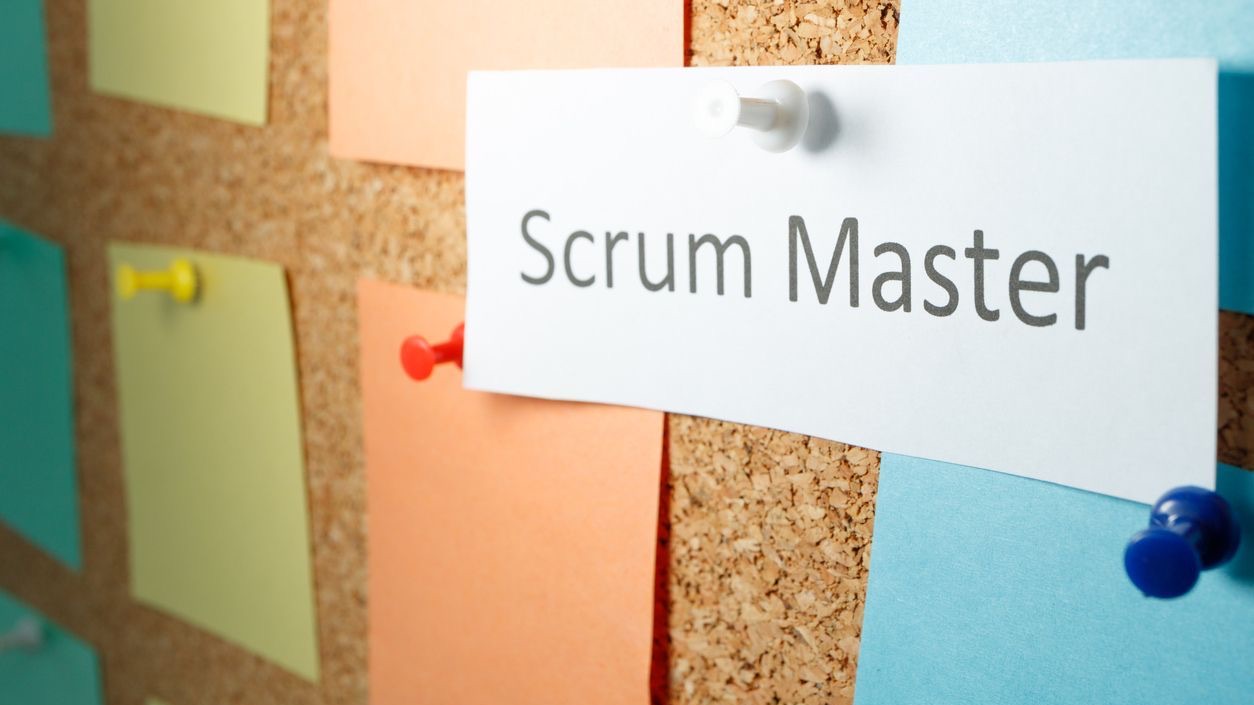Effective communication is the cornerstone of successful Agile teams, and Scrum master facilitation plays a pivotal role in ensuring teams stay aligned, productive, and focused on delivering value. In today’s fast-paced work environments, Scrum masters serve as communication catalysts, breaking down barriers and fostering meaningful collaboration across diverse team members. As organizations increasingly adopt Agile methodologies, the demand for skilled facilitators who can navigate complex team dynamics, resolve conflicts, and maintain momentum has never been greater. This is especially true in shift-based industries where coordinating team members working on different schedules creates additional communication challenges that must be overcome.
The modern Scrum master must balance technical knowledge with interpersonal skills, employing a variety of facilitation techniques to promote transparency, inspection, and adaptation. Through thoughtful meeting management, active listening, and creating psychological safety, Scrum masters help transform groups of individuals into high-performing teams. Tools like Shyft’s team communication platform support these efforts by providing digital infrastructure that connects team members across locations and time zones. This comprehensive guide explores everything you need to know about Scrum master facilitation in the context of Agile team communication, offering practical insights for both new and experienced facilitators seeking to enhance team performance and collaboration.
Understanding the Scrum Master’s Role in Team Communication
The Scrum master serves as a communication bridge, facilitating information flow and ensuring team members have what they need to perform effectively. Unlike traditional project managers, Scrum masters don’t direct the team but rather create an environment where self-organization and collaboration can flourish. This distinction is crucial for organizations transitioning from command-and-control structures to more collaborative approaches. Effective facilitation by Scrum masters has been shown to improve team velocity, quality of deliverables, and overall satisfaction among team members.
- Servant Leadership Approach: Removes impediments and shields the team from external disruptions while empowering team members to make decisions.
- Process Guardian: Ensures Agile principles and Scrum practices are followed, particularly during key ceremonies and communication touchpoints.
- Communication Catalyst: Facilitates information exchange among team members, stakeholders, and across organizational boundaries.
- Coaching Mindset: Helps team members improve their communication skills and develop a culture of continuous improvement.
- Conflict Navigator: Addresses tensions constructively, turning potential communication challenges into growth opportunities.
The Scrum master’s effectiveness is largely determined by their communication capabilities. According to research on effective communication strategies, teams with strong facilitators show 50% higher productivity than those without dedicated facilitation. For organizations using shift marketplace systems, Scrum masters must adapt their communication approaches to accommodate team members working across different schedules, making asynchronous communication tools essential to maintaining team cohesion.
Essential Facilitation Techniques for Scrum Masters
Mastering facilitation techniques is vital for Scrum masters to effectively guide their teams. These techniques help create an environment where all voices are heard, decisions are made collaboratively, and the team remains focused on delivering value. Facilitation isn’t about controlling discussions but rather about enabling productive conversations that lead to meaningful outcomes. Modern facilitation approaches blend traditional in-person techniques with digital collaboration methods, particularly important for teams utilizing remote team scheduling.
- Active Listening: Using techniques like paraphrasing, summarizing, and asking clarifying questions to ensure understanding.
- Visual Facilitation: Employing diagrams, mind maps, and digital whiteboards to capture ideas and create shared understanding.
- Timeboxing: Setting and enforcing time constraints for discussions to maintain focus and momentum.
- Dot Voting: Facilitating democratic decision-making through simple voting mechanisms that give everyone equal input.
- Silent Writing: Using techniques like brain-writing to gather ideas from everyone, especially beneficial for introverted team members.
Effective facilitation requires adapting to the team’s needs and communication preferences. For teams using multi-location group messaging, Scrum masters must become adept at facilitating virtual discussions through digital channels. These approaches can be further enhanced through the use of advanced communication features and tools that support both synchronous and asynchronous team interactions.
Facilitating Scrum Ceremonies for Maximum Communication Value
Scrum ceremonies provide structured opportunities for team communication, and skillful facilitation of these events significantly impacts their effectiveness. Each ceremony has unique communication objectives that Scrum masters must understand and support. For teams working across different shifts, these ceremonies may need to be adapted to accommodate varying schedules, which is where flexible scheduling options become valuable in maintaining regular team touchpoints.
- Daily Standup Facilitation: Keeping the meeting focused, timely, and centered on three key questions while preventing side discussions.
- Sprint Planning Guidance: Ensuring the team has clear information about priorities and helping negotiate realistic commitments.
- Retrospective Moderation: Creating psychological safety for honest feedback and guiding the team toward actionable improvements.
- Review Meeting Management: Facilitating stakeholder engagement and helping the team gather valuable feedback on deliverables.
- Backlog Refinement Coordination: Supporting clear understanding of requirements and ensuring productive clarification discussions.
Scrum masters must balance adherence to ceremony structure with flexibility to meet the team’s unique needs. Communication skills for schedulers become particularly relevant when coordinating these ceremonies across complex team schedules. For distributed teams, leveraging virtual coffee breaks and informal communication opportunities can supplement formal ceremonies to build team cohesion and trust.
Navigating Communication Challenges in Agile Teams
Communication challenges are inevitable in Agile teams, particularly as they scale or operate in complex organizational contexts. Scrum masters must develop strategies to identify and address these challenges before they impact team performance. In shift-based environments, these challenges are often amplified by scheduling complexities, making team communication preferences an important consideration in developing effective solutions.
- Cross-functional Silos: Breaking down knowledge barriers between different specialties through shared vocabulary and translation.
- Distributed Team Coordination: Addressing time zone challenges and cultural differences through asynchronous communication strategies.
- Information Overload: Helping teams prioritize communications and develop efficient information-sharing protocols.
- Stakeholder Communication: Bridging the gap between technical teams and business stakeholders through appropriate translation.
- Remote Work Obstacles: Establishing rituals and tools that create connection despite physical distance.
Effective Scrum masters develop proactive approaches to these challenges, often leveraging real-time notifications and other digital tools to maintain team alignment despite obstacles. For teams experiencing communication difficulties, measuring team communication effectiveness provides valuable insights that can guide targeted improvements. Successfully addressing these challenges often requires a combination of process refinements and appropriate technology support.
Building Psychological Safety Through Facilitation
Psychological safety—the shared belief that team members can take interpersonal risks without negative consequences—is essential for effective communication in Agile teams. Scrum masters play a critical role in establishing and maintaining this safety through their facilitation approach. Research shows that psychologically safe teams demonstrate higher innovation, better problem-solving, and more effective collaboration. This aspect becomes particularly important when implementing shift worker communication strategies.
- Modeling Vulnerability: Demonstrating openness to feedback and acknowledging mistakes to set the tone for the team.
- Normalizing Uncertainty: Creating space for team members to express doubts or questions without judgment.
- Celebrating Learning: Reframing failures as opportunities for growth and improvement rather than causes for blame.
- Equal Participation: Using facilitation techniques that ensure all voices are heard, including those who may be less assertive.
- Constructive Conflict: Helping teams engage in healthy debate focused on ideas rather than personalities.
Building psychological safety is an ongoing process that requires consistent attention from Scrum masters. Cross-shift team spirit initiatives can help extend this safety across different work schedules. For teams experiencing trust issues, team building tips provide practical approaches to strengthen relationships and create foundations for more open communication.
Digital Tools for Enhanced Scrum Master Facilitation
In today’s digital work environment, Scrum masters rely on a variety of tools to facilitate effective team communication, particularly for distributed teams. The right tool selection can significantly enhance a Scrum master’s ability to coordinate activities, capture information, and promote collaboration. For teams using Shyft’s scheduling platform, these digital facilitation tools can be integrated into existing workflows to create a seamless communication experience.
- Digital Whiteboards: Platforms like Miro or Mural for visual collaboration and interactive workshop facilitation.
- Team Chat Applications: Structured communication channels that support both real-time and asynchronous information sharing.
- Agile Management Platforms: Tools that provide visibility into work progress and support ceremony facilitation.
- Polling and Feedback Tools: Applications that gather team input anonymously to support honest reflection.
- Shared Documentation Systems: Collaborative spaces for maintaining team agreements, decisions, and knowledge.
Effective Scrum masters don’t just implement tools; they thoughtfully integrate them into the team’s communication ecosystem. Leveraging technology for collaboration requires balancing digital efficiency with human connection. Teams using push notifications for shift teams can ensure time-sensitive communications reach the right people at the right time, enhancing coordination across work schedules.
Measuring and Improving Communication Effectiveness
Continuous improvement is a core Agile principle that applies to team communication processes as much as to product development. Scrum masters should establish metrics and feedback mechanisms to assess communication effectiveness and identify opportunities for enhancement. For organizations using Shyft’s reporting and analytics, these communication metrics can be integrated with other performance indicators to provide a holistic view of team health.
- Communication Retrospectives: Dedicated sessions to reflect on team communication patterns and identify improvements.
- Information Flow Analysis: Mapping how information travels through the team to identify bottlenecks or gaps.
- Decision Latency Tracking: Measuring the time between when information is needed and when decisions are made.
- Meeting Effectiveness Surveys: Gathering feedback on the value and efficiency of team ceremonies.
- Communication Satisfaction Assessment: Regularly checking team members’ perception of information adequacy and clarity.
Data-driven approaches to communication improvement help Scrum masters focus their facilitation efforts where they’ll have the greatest impact. Performance metrics for shift management can provide valuable context for understanding communication patterns across different work schedules. For teams seeking to enhance their communication practices, engagement metrics offer insights into how effectively team members are participating in collaborative processes.
Facilitating Remote and Hybrid Agile Teams
Remote and hybrid work arrangements present unique communication challenges that require adapted facilitation approaches. Scrum masters must develop strategies to maintain team cohesion, ensure information equity, and foster collaboration despite physical distance. With many organizations now employing split-location workforce management, these remote facilitation skills have become essential for effective Agile team coordination.
- Distributed Ceremony Design: Structuring meetings to accommodate both in-person and remote participants equitably.
- Digital-First Documentation: Ensuring all information is accessible to everyone regardless of location.
- Virtual Relationship Building: Creating opportunities for informal interactions that build trust across distances.
- Asynchronous Facilitation: Developing processes that enable collaboration across different time zones and schedules.
- Technology Equity: Ensuring all team members have appropriate tools and connectivity for full participation.
Successful remote facilitation often requires greater intentionality and structure than in-person approaches. Remote shift overlap management practices can help create purposeful connection points between team members working different schedules. For teams struggling with remote collaboration, automated scheduling for remote shift managers can streamline coordination and ensure communication opportunities are consistently maintained.
Developing Advanced Facilitation Skills
Scrum master facilitation is a complex skill set that evolves with experience and deliberate practice. Advanced facilitators develop nuanced abilities to read group dynamics, address unspoken concerns, and guide teams through challenging situations. For organizations investing in training programs and workshops, focusing on these advanced facilitation skills can significantly enhance the effectiveness of Agile team communication.
- Systems Thinking: Understanding complex team interactions and identifying leverage points for communication improvement.
- Conflict Transformation: Moving beyond resolution to help teams harness tension as a source of innovation.
- Cultural Intelligence: Navigating cross-cultural communication patterns, especially in global teams.
- Group Psychology: Recognizing and addressing group dynamics that impact team communication.
- Coaching Conversations: Using powerful questions to help team members discover their own solutions.
Professional development for Scrum masters should include ongoing learning in these advanced facilitation areas. Manager coaching programs can help Scrum masters refine their facilitation approach through feedback and guided practice. For organizations seeking to enhance their Agile communication capabilities, compliance training that includes communication best practices ensures teams maintain high standards while meeting regulatory requirements.
Tailoring Facilitation to Team Maturity
Effective Scrum masters adapt their facilitation approach based on the team’s maturity level, recognizing that teams have different needs as they progress through forming, storming, norming, and performing stages. This adaptive facilitation helps teams develop their communication capabilities progressively. For organizations using customization options in their team communication platforms, these adaptations can be reflected in digital workspace configurations.
- Forming Teams: Providing clear structure and direction while helping establish communication norms and relationships.
- Storming Teams: Facilitating constructive conflict resolution and helping navigate interpersonal tensions.
- Norming Teams: Supporting the establishment of stable communication patterns and collaborative practices.
- Performing Teams: Focusing on optimization and helping the team navigate complex communication challenges.
- Transforming Teams: Facilitating adaptation to organizational changes while maintaining communication effectiveness.
As teams mature, Scrum masters should gradually shift from directive to coach-like facilitation, empowering team members to take ownership of their communication practices. Implementation and training programs should recognize these maturity stages and provide appropriate support at each level. For teams experiencing significant growth or change, adapting to business growth strategies can help maintain communication effectiveness during transition periods.
Conclusion: Mastering the Art of Scrum Facilitation
Effective Scrum master facilitation transforms team communication from a potential obstacle into a powerful enabler of Agile success. By mastering the techniques, tools, and approaches outlined in this guide, facilitators can help their teams achieve new levels of collaboration, adaptability, and performance. The investment in developing these facilitation skills yields significant returns through improved team dynamics, faster problem-solving, and more innovative solutions. For organizations using Shyft for workforce management, integrating these facilitation practices with the platform’s communication features creates a comprehensive approach to Agile team coordination.
The journey to facilitation mastery is ongoing, requiring continuous learning, reflection, and adaptation. Successful Scrum masters remain curious about team dynamics, open to new facilitation approaches, and committed to creating environments where authentic communication flourishes. As work environments continue to evolve—becoming more distributed, diverse, and digital—strong facilitation will remain a critical success factor for Agile teams. By focusing on both the science and art of facilitation, Scrum masters can help their organizations navigate change while maintaining the human connections that drive innovation and engagement in Agile teams.
FAQ
1. What’s the difference between facilitation and directing in Scrum teams?
Facilitation involves creating the conditions for teams to succeed through their own efforts, while directing involves telling teams what to do. Scrum masters practice facilitation by asking powerful questions, creating effective meeting structures, and helping teams remove impediments to their communication and work. Unlike traditional project managers who might assign tasks and make decisions, facilitators help teams make their own decisions and take ownership of their process. This approach aligns with Agile principles of self-organization and empowerment, leading to more sustainable team performance and greater innovation.
2. How can Scrum masters facilitate effectively across different shifts and time zones?
Facilitating across shifts and time zones requires a combination of synchronous and asynchronous approaches. Scrum masters should establish clear documentation practices so information is accessible to all team members regardless of when they work. Digital tools like Shyft’s team communication platform can help bridge time gaps through persistent chat, recorded video updates, and shared digital workspaces. When synchronous meetings are necessary, rotate times to share the burden of odd-hours calls. Creating overlap windows where all team members are available, even briefly, can provide valuable synchronous communication opportunities while respecting different work schedules.
3. What metrics can Scrum masters use to evaluate their facilitation effectiveness?
Scrum masters can evaluate their facilitation effectiveness through both quantitative and qualitative metrics. Quantitative measures include meeting efficiency (time spent vs. outcomes achieved), decision latency (how quickly the team reaches conclusions), and information distribution (whether all team members have access to needed information). Qualitative metrics include team feedback through retrospectives or surveys, psychological safety assessments, and observations of communication patterns during team interactions. The most valuable metric is often the team’s own perception of how well they’re communicating and collaborating, which can be gathered through regular feedback channels and anonymous surveys.
4. How does a Scrum master balance facilitation with other responsibilities?
Balancing facilitation with other Scrum master responsibilities requires thoughtful prioritization and time management. Facilitation should be viewed as an integral part of the role rather than an additional task, as it enhances the effectiveness of other Scrum master responsibilities like removing impediments and coaching the team. Establish regular time blocks for preparation before key facilitation moments like Sprint ceremonies. Leverage tools like engagement metrics to focus facilitation efforts where they’re most needed. For Scrum masters supporting multiple teams, create clear boundaries around availability and leverage asynchronous communication tools to maintain presence without requiring constant synchronous interaction.
5. What are the most common facilitation mistakes Scrum masters make?
Common facilitation mistakes include taking over discussions instead of enabling team participation, failing to address dominant voices that prevent others from contributing, and not creating psychological safety for honest communication. Many Scrum masters struggle with balancing structure and flexibility in their facilitation approach, either being too rigid with processes or too unstructured to drive outcomes. Another frequent mistake is neglecting to adapt facilitation techniques to the team’s maturity level, using the same approach regardless of whether the team is new or experienced. Lastly, some facilitators focus exclusively on verbal communication while overlooking the importance of visual techniques and written documentation, especially in remote or distributed team environments.












